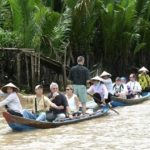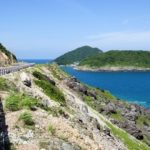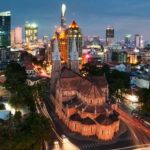Danton Remoto, a Filipino editor, columnist, and professor, recently wrote an article for the Manila Times in which he examines the significant changes that have occurred in Vietnam’s tourism industry over the past decade.
The Remarkable Transformation of Hanoi

A lush green street in Hanoi. Photo: Ha Noi Fan
Danton first visited Vietnam in 2007 as an English professor attending an international education conference. At that time, Vietnam’s two largest cities, Ho Chi Minh City and Hanoi, were relatively underdeveloped. However, Danton noticed glimpses of potential even back then.
When he returned to Hanoi in 2018, ten years later, Danton was taken aback by the dramatic transformation of the city. He wrote, “The landscape from the airport to the hotel remained similar to that of ten years ago – vast rice paddies, withered banana trees, and an endless skyline. But upon arriving in Hanoi, it was almost unrecognizable. The old and beautiful shophouses were still present, but now there were roads and flyovers being constructed.”

Hanoi’s harmonious old and new beauty. Photo: Ha Noi Fan
One interesting change Danton observed in Hanoi was the shift in attitudes towards learning foreign languages. He noticed that young people, who were once hesitant to speak a foreign language, are now actively engaged in large-scale English learning programs. In a cafeteria near his hotel, Danton experienced the baristas staying longer at his table and conversing with him in English, knowing that he was a Filipino English teacher.
These students chose to work in coffee shops frequented by tourists not only for better pay but also to practice their English skills. Danton remarked, “Hanoi’s restaurants, hotels, shopping malls, and coffee shops have flourished, and its museums and art galleries are on par with the best in Southeast Asia.” These changes, among others, have contributed to Vietnam surpassing the Philippines as a tourism powerhouse.
Reasons behind Vietnam’s Tourism Success
Danton then analyzed the factors that have led to Vietnam’s remarkable growth in tourism. He credited the country’s political stability and effective governance, along with its long-term policies that prioritize tourism development. Vietnam’s low-budget airlines, affordable accommodations, reliable Wi-Fi, and general cleanliness have also contributed to its appeal for tourists.

Uncle Ho’s Mausoleum, a tourist attraction in Hanoi. Photo: Cao Anh Tuan
Danton also highlighted Vietnam’s successful branding efforts, which emphasize its natural landscapes, rich history, and unique cultural experiences. The country’s proactive marketing campaigns, coupled with effective use of social media, have boosted its presence in the global tourism market.
Vietnam has also diversified its tourist offerings, catering to various interests and preferences. From the bustling streets of Hanoi and Ho Chi Minh City to the serene beauty of Halong Bay and the cultural charm of Hoi An, Vietnam offers a wide range of experiences. The country has capitalized on adventure tourism, ecotourism, and culinary tourism, providing visitors with immersive and distinctive experiences.

The bustling of Hanoi’s Old Quarter. Photo: Ha Noi Fan
On the other hand, Danton pointed out that the Philippines has yet to fully leverage its potential for tourism beyond its stunning natural landscapes. Vietnam’s commitment to improving service quality, hospitality, and safety standards has also contributed to its success. In contrast, the Philippines has faced challenges in maintaining consistency in these areas, which has affected the overall visitor experience.
Danton concluded by stating that Vietnam has proven to be a safe and welcoming destination that offers both cultural richness and modern infrastructure. These factors have played a significant role in Vietnam’s ascent as a tourism powerhouse, outpacing the Philippines.
Vietnam Military History Museum receives Fatherland Protection Order
NDO – The Vietnam Military History Museum held a ceremony in Hanoi on July 15 to celebrate its 60th anniversary (1956-2016) and receive the Fatherland Protection Order, first class.
Ancient house in Ma May
NDO – Ma May, a rare quarter that still retains several old houses, has created one of the characteristics of Hanoi. Hanoi’s streets are becoming increasingly crowded and traditional features can sometimes be hidden behind modern life. But if one takes the time to relax and look around, the ancient features begin to reveal themselves.








